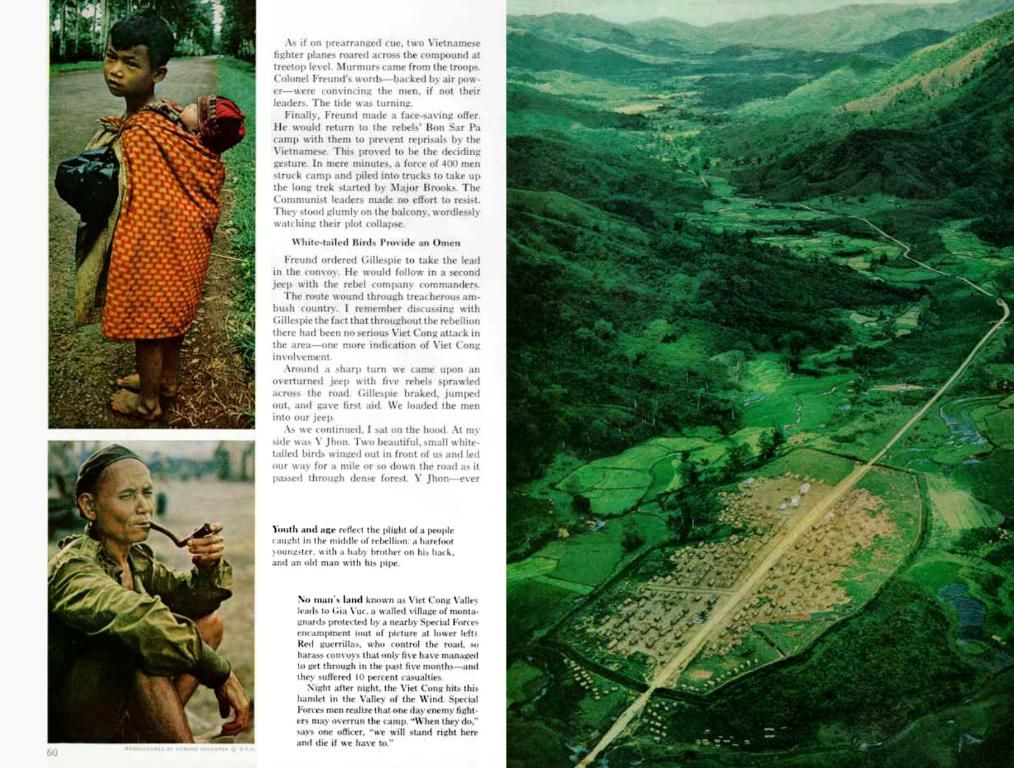The Peaceful Grandeur of Phuktal Monastery Unveiled
Hangin' with the Holy Honeycombs: A Journey to Phuktal Monastery
Nestled amidst the soaring peaks and rugged terrain of southeastern Zanskar, Ladakh, lies Phuktal Monastery - a remote Buddhist heaven perched precariously above the Tsarap River. Situated about 52 kilometers from Padum along the Nimmu-Padum-Darcha road, this incredible structure seems to spring from the very heart of the cliff face, a sprawling, organic wonder that echoes the natural caves believed to have been frequented by enlightened sages and mystics.
A spiritual powerhouse steeped in captivating folklore, Phuktal Monastery is an architectural gem that transcends mere construction. Its heart is a sacred cave, rumored to have defied conventional size and growth under the guidance of Zangpo, a spiritually gifted figure believed to have meditated within its walls. The tales spin a tale of miraculous occurrences—a spring flowing from the very core, a tree taking root on its roof, and the cave itself expanding in size under Zangpo's watchful gaze. It was under his guidance that Phuktal Monastery found form, an inspired confluence of spirituality and breathtaking cliffside design.
Until 2023, scaling the heights of Phuktal Monastery meant a grueling day's trek from the last accessible villages, Chah or Khangsaar. Horses, donkeys, and mules bore essential supplies, while the frozen Zanskar River provided a makeshift road in the winter months. Today, the Nimmu-Padum-Darcha road has made the journey easier, but its remote charm remains intact.
Despite the road, the final approach demands a two-hour walk, retracing the spirit of adventure that drew visitors for centuries. The reward? A glimpse into the timeless life of monks in a spiritual haven that weaves naturally into its surroundings, replete with a main temple, prayer rooms, a library stocked with rare texts, and quarters for approximately 70 resident monks. From every vantage point, the monastery's design exudes a mastery of rugged beauty and enduring myth that has shaped its very identity.
Phuktal Monastery: A History in Stones
Phuktal Monastery is said to have been founded in the 12th century, its stark silhouette carved into the limestone cliffs of Zanskar Valley. A beacon of Buddhist spirituality, the monastery has lured pilgrims and adventurers alike with its mystique and remote isolation. Within these sacred walls, ancient sages and scholars are believed to have meditated, their wisdom etched into the stone.
Getting Your Boots Dirty
In order to reach Phuktal Monastery, one must first venture from Padum to the villages of Purne or Char, accessible by jeep. From there, a few hours of trekking along the narrow, picturesque trails tracing the Lungnak River lead the way to this ethereal, cliffside oasis. The journey is challenging but rewards visitors with breathtaking vistas and an intimate peek into the serene lives of Phuktal's devoted monastic community.
Traveling beyond the conventional boundaries of spirituality and lifestyle, one can embark on a journey to Phuktal Monastery, a historical marvel nestled in the Zanskar Valley. This architectural masterpiece, dating back to the 12th century, combines science – with its organic design mimicking natural caves – and space-and-astronomy, as it defies ordinary size growth under the watch of a spiritually gifted figure. The monastery's unique location, perched precariously above the Tsarap River, offers travelers a chance to explore its wonders while immersing themselves in the timeless rituals and tranquility of this remote Buddhist haven.




